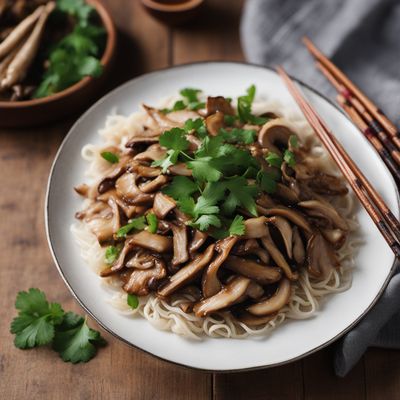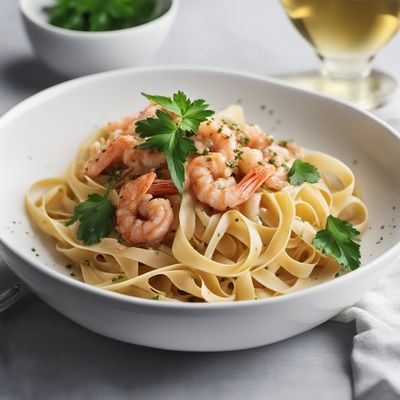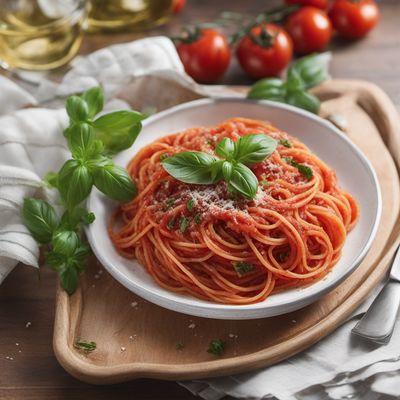
Ingredient
Charcuterie meat products
The Art of Preserving Flavor
Charcuterie meat products are typically made from various cuts of pork, beef, or game meats that undergo a curing and preservation process. These meats are often seasoned with a combination of herbs, spices, and other flavorings before being smoked, air-dried, or fermented. The result is a selection of meats with intense flavors, unique textures, and a beautiful marbled appearance.
Origins and history
The art of charcuterie dates back centuries and has its roots in ancient preservation techniques. Originally developed as a way to extend the shelf life of meats, charcuterie has evolved into a culinary art form. Different regions around the world have their own traditional charcuterie specialties, such as Italian prosciutto, French saucisson, and Spanish chorizo.
Nutritional information
The nutritional information of charcuterie meat products can vary depending on the specific type of meat and the curing process used. They are generally high in protein and fat, and may contain significant amounts of sodium. It is important to consume charcuterie in moderation as part of a balanced diet.
Allergens
Some charcuterie meat products may contain allergens such as gluten, soy, or dairy, depending on the specific ingredients used in the curing process. It is important to read the labels or consult with the producer if you have any dietary restrictions or allergies.
How to select
When selecting charcuterie meat products, look for meats that have a vibrant color, a pleasant aroma, and a firm texture. Avoid meats that appear slimy, have an off-putting odor, or feel overly soft. It is recommended to purchase charcuterie from reputable sources, such as specialty delis or artisanal producers.
Storage recommendations
To maintain the freshness and quality of charcuterie meat products, store them in a cool, dry place, away from direct sunlight. Once opened, they should be tightly wrapped in butcher paper or plastic wrap and stored in the refrigerator. It is important to consume charcuterie within a few days of opening to ensure optimal flavor and safety.
How to produce
Producing charcuterie meat products at home requires specialized knowledge and equipment to ensure food safety. It is best to leave the production of charcuterie to professional producers who have the necessary expertise and facilities.
Preparation tips
Charcuterie meat products can be enjoyed on their own as part of a charcuterie board, paired with various cheeses, bread, and condiments. They can also be incorporated into sandwiches, salads, pasta dishes, or used as toppings for pizzas and flatbreads. The versatility of charcuterie allows for endless culinary creations.
Culinary uses
Charcuterie meat products are commonly used in charcuterie boards, gourmet sandwiches, salads, pasta dishes, and as toppings for pizzas and flatbreads.
Availability
Charcuterie meat products are commonly available in Europe, particularly in countries like France, Italy, and Spain. They can also be found in specialty delis or gourmet food stores worldwide.
More ingredients from this category

Sausages
Savory Links: A Journey Through Flavor

Processed whole meat products
The Art of Preserved Meats

Meat specialties
The Art of Meat Mastery

Preserved/processed fat tissues
The Art of Preserving and Processing Fat Tissues

Animal meat dried
The Savory Essence of Dehydrated Animal Meat

Edible casings
The Versatile Wrappers: Exploring the World of Edible Casings
Recipes using Charcuterie meat products » Browse all

Tiella di Riso e Cozze (Rice and Mussels Casserole)
Mediterranean Delight: Tiella di Riso e Cozze - A Seafood Infused Italian Casserole

Phoenix Tail Shrimp Stir-Fry
Fiery Shrimp Delight: A Spicy Twist on Chinese Cuisine

Imperial Chicken and Mushroom Stir-Fry
Regal Delight: Imperial Chicken and Mushroom Stir-Fry

Anguilla alla giovese with Tomato and Herb Sauce
Savory Italian Eel in Tomato and Herb Sauce

Black Risotto with Squid Ink
Savory Delight: Croatian Black Risotto with a Seafood Twist

Slovenian-style Braised Pork Shank
Tender and Flavorful Slovenian Pork Shank Delight

Tagliatelle with Calamari and Scampi
Seafood Delight: Tagliatelle with Calamari and Scampi

Macedonian-style Clam Pasta
Mediterranean Delight: Macedonian-style Clam Pasta

Homemade Steamed Soup Dumplings
Savor the Delight: Homemade Steamed Soup Dumplings

Catalan Seafood Stew
Mediterranean Delight: Catalan Seafood Stew

Rhenish-Hessian Chicken Curry
Spiced Chicken Delight: A Taste of Rhenish-Hessian Cuisine

Spaghetti alla Busara
Savory Seafood Delight: Spaghetti alla Busara